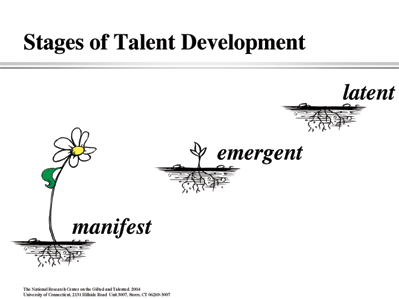![]()
E. Jean Gubbins
University of Connecticut
Storrs, CT
The more we learn about intelligence the more we need to know. Intelligence is a complex construct. We all think we know what it is; we can describe the characteristics of intelligent people and intelligent behaviors. We also recognize the quality of “products of mind” that may lead to inventions, poetry, essays, musical compositions, original dance composition, or paintings. Abstract and concrete notions of intelligence point to reasons why it is studied by researchers, educators, and the community at large. In 1996, an august group of 11 researchers and scholars associated with the American Psychological Association were charged with the responsibility of studying intelligence and preparing a “dispassionate survey of the state of the art: to make clear what has been scientifically established, what is presently in dispute, and what is still unknown” (Neisser et al., p. 78). As stated in the resulting article, we recognize that “individuals differ from one another in their ability to understand complex ideas, to adapt effectively to the environment, to learn from experience, to engage in various forms of reasoning, to overcome obstacles . . .” (Neisser et al., p. 77). The extent of these differences may be considerable; however, the extent is never exactly the same among individuals. The activation of one’s intelligence varies by time, place, circumstances, content areas, and the criteria by which it is assessed. Renzulli (1988) asserts that intellectual abilities vary “in certain people, at certain times, and under certain circumstances” (p. 21).
Is there one intelligence or many intelligences? How does one’s culture affect the recognition and nurturance of intellectual abilities? Are there developmental milestones that mark the growth of intellectual abilities of children? As educators and researchers we often lean towards the psychometric evaluation of intelligence. In the field of gifted and talented education, we reflect on Alfred Binet’s experimental work in developing a test that would clearly delineate the skills and abilities of children. The results from this test and many others developed by renowned researchers and scholars yield scores or IQs with a typical mean of 100 and a standard deviation of 15 points. There is a sense of understanding upon hearing or seeing a child’s test results. The question remains, however, do we truly understand what the results mean? Does the number blind us from the recognition of a panoply of abilities (e.g., creativity, motivation, wisdom, and perseverance), which may be equally important, but harder to quantify, predict, or compare on a consistent basis.
In the 1990s, a group of scholars and researchers convened several times to study, debate, and discuss terms associated with intelligence (e.g., talents, abilities) and how they manifest in children and youth. Their work resulted in National Excellence: A Case for Developing America’s Talent (U.S. Department of Education, 1993). This publication was the second report released by the federal government that made a statement about what we know about children’s talents and abilities. The first is known as the Marland Report (1972) that documented a consensus definition that illuminated the complexity of behaviors in multiple domains. The 1993 definition honored many of the words first used in the Marland Report and extended it in several ways:
These children or youth exhibit high performance capability in intellectual, creative, and/or artistic areas, possess an unusual leadership capacity, or excel in specific academic fields. They require activities not ordinarily provided in the school.
Outstanding talents are present in children and youth from all cultural groups, across all economic strata, and in all areas of human endeavor. (United States Department of Education, 1993, p. 26)
Word choice and phrases were vetted carefully for meaning, relevance, and importance. Outstanding talent, as performance or potential, at high levels compared to age peers, experience, or environment made it evident that intelligence(s), talents, or abilities cannot be summarized by a number. The complexity of human abilities is still being investigated, as is the ability to measure what we think we know about intelligence. In an attempt to visualize talents and abilities, the National Research Center on the Gifted and Talented (NRC/GT) created the graphic representation below for our professional development module (Burns et al., 2002).
This visualization may be an over-simplification of talents and abilities, but it emphasizes that sometimes talents and abilities are obvious. We do not question the abilities of young children who read and understand text that is usually appropriate for middle or high school students, who demonstrate mathematical prowess and problem solving abilities that continually need to be challenged, or who create original musical compositions applauded by professional composers. Other talents and abilities may be at the early stages of emergence and need attention and nurturance to help children fully develop the requisite advanced knowledge and skills; and still other talents and abilities may be latent due to developmental levels or exposure to the domains.
Hopefully, this brief snapshot will spark further conversation about intelligence and how each of us can contribute to the recognition, understanding, and nurturance of manifest, emergent, and latent talents and abilities among children, youth, and adults with whom we interact. The potential of human beings is still being studied and the Jacob K. Javits Gifted and Talented Education Act reminds us that “Outstanding talents are present in children and youth from all cultural groups, across all economic strata, and in all areas of human endeavor.” The snapshot of intelligence is still coming into focus for many people and future scientifically-based studies will benefit all of us.
